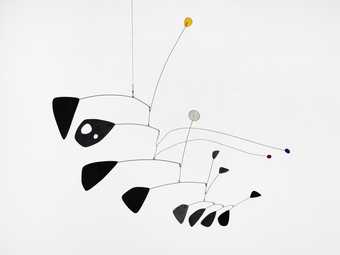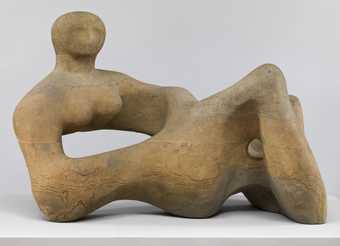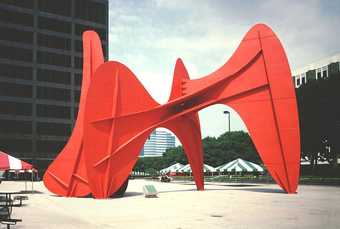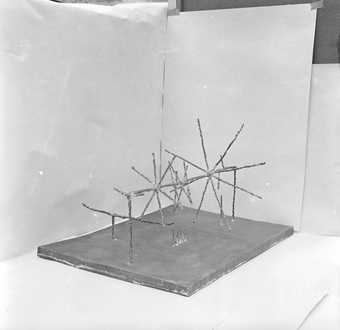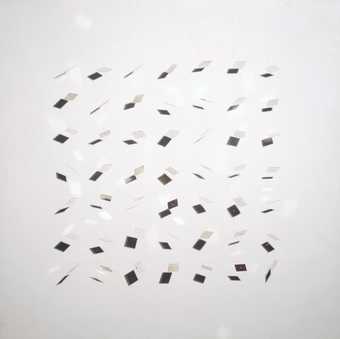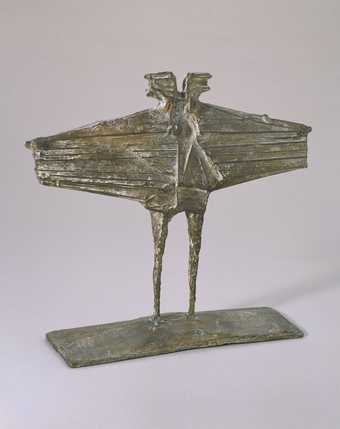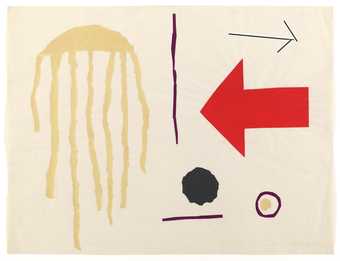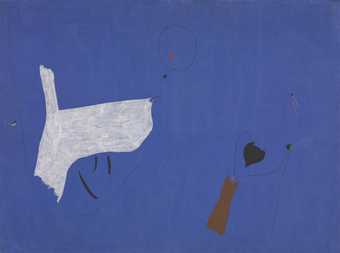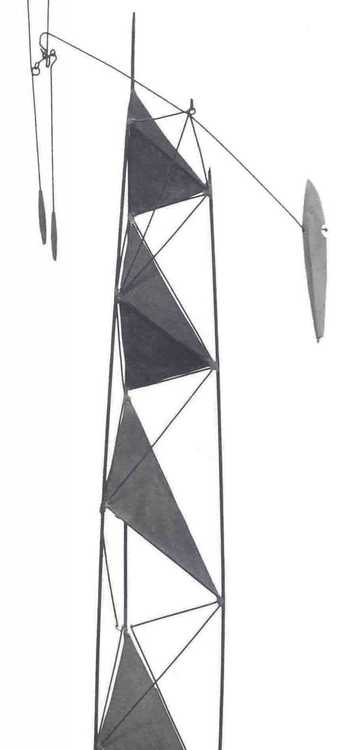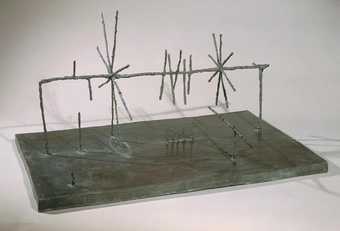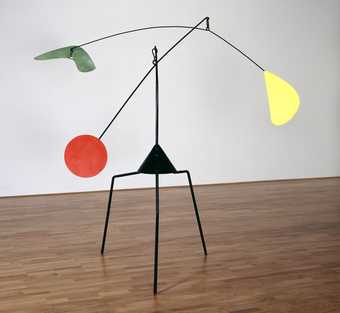
Alexander Calder
Untitled
(1937)
Tate
Artist Alexander Calder was the originator of the mobile. By suspending forms that move with the flow of air, Calder revolutionised sculpture. It was Marcel Duchamp who dubbed these works ‘mobiles’. Rather than a solid object of mass and weight, they continually redefine the space around them as they move. Calder’s subtle balance of form and colour resulted in works that suggest an animated version of paintings by friends such as Joan Miró.

